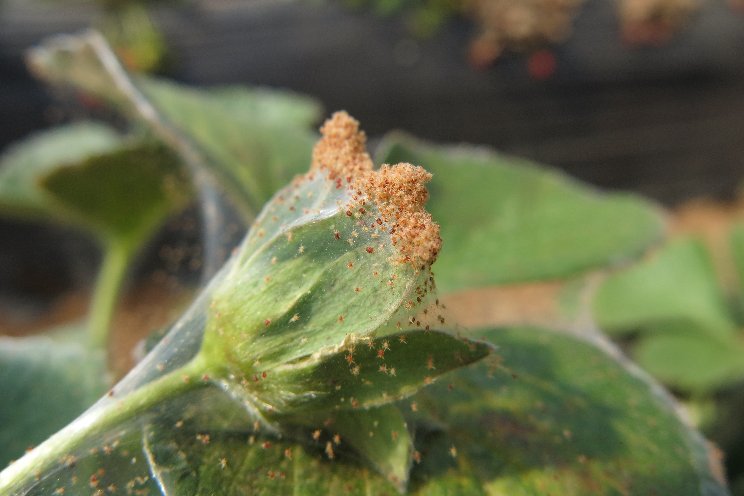Safeguarding spider mite control with higher introduction rates
Added on 08 July 2024

The predatory mite Phytoseiulus persimilis remains the cornerstone of spider mite IPM programmes. Meanwhile, the winged-predator Feltiella acarisuga is introduced to search out, and target, pest hot spots. In addition, in some crops breeding sachets of Amblyseius californicus or A. andersoni are deployed early season. These are designed to release a steady stream of hungry predators.
Fewer “hard breaks”
“In the past, growers had a range of chemical crop protection products to fall back on,” says Arno. “These could provide a ‘hard break’ if the pest became problematic. Now, with a dwindling range available, growers need to safeguard their IPM strategies. We therefore recommend increasing the introduction rates of the biological components.”
Extra eyes in the field
According to Arno, good crop monitoring is more important than ever. “Scouts cannot be everywhere in the crop,” he says. “It’s important to train crop workers to be ‘extra eyes’ in the field.”
“At the first sign of spider mite, growers need to introduce Phytoseiulus-System at a rate of 20 predators per m2 — with higher rates recommended for tomato crops. Upon identifying pest hot spots, Feltiella-System should be introduced. Growers lacking skilled scouts and crop workers, are starting to use Feltiella preventatively – before hot spots are detected. In this instance, this underutilised but highly mobile predator becomes the scout – searching the crop for pests.”
Increasing sachets in cucumbers
“Early in the cucumber crop cycle we recommend introducing Californicus-Breeding-System or Andersoni-Breeding-System sachets, at a rate of one per four linear metres – or one every 16th plant. If there have been historical issues, this should be increased to one sachet every two plants.”
“In the absence of natural pollen or nectar, dry pollen (Nutrimite™) can be blown over the crop to help build up a ‘standing army’ of predators. As the season progresses, the strategy moves to Phytoseiulus-System and Feltiella-System.”
Higher rates in tomatoes
“The sticky, glandular stem hairs on tomato plants hinder Phytoseiulus, requiring higher introduction rates,” says Arno. “If sulphur burners are used to protect against powdery mildew, this can disorient Feltiella – also necessitating higher rates. On a positive note, Macrolophus-System contributes to overall spider mite control in tomatoes.”
Rate changes in soft fruit
At the outset of strawberry and raspberry crops, Arno recommends deploying Californicus-Breeding-System or Andersoni-Breeding System at a rate of one sachet per two metres. However, in varieties particularly prone to spider mite, or where there is a history of issues, he advocates doubling the rate to one sachet per metre.
“This strategy generally works well,” he says. “However, if necessary, we recommend subsequent introductions of Phytoseiulus-System, at 20/m2 for two consecutive weeks and Feltiella-System — at 7 pots per hectare for three consecutive weeks.”
“If the shiny, black Stethorus beetle appears naturally in the crop, it is generally a sign there is a spider mite issue,” Arno warns. “With high levels of pest damage there are likely to be yield losses.”
For more information, please contact marketing.support@biobestgroup.com
More news















